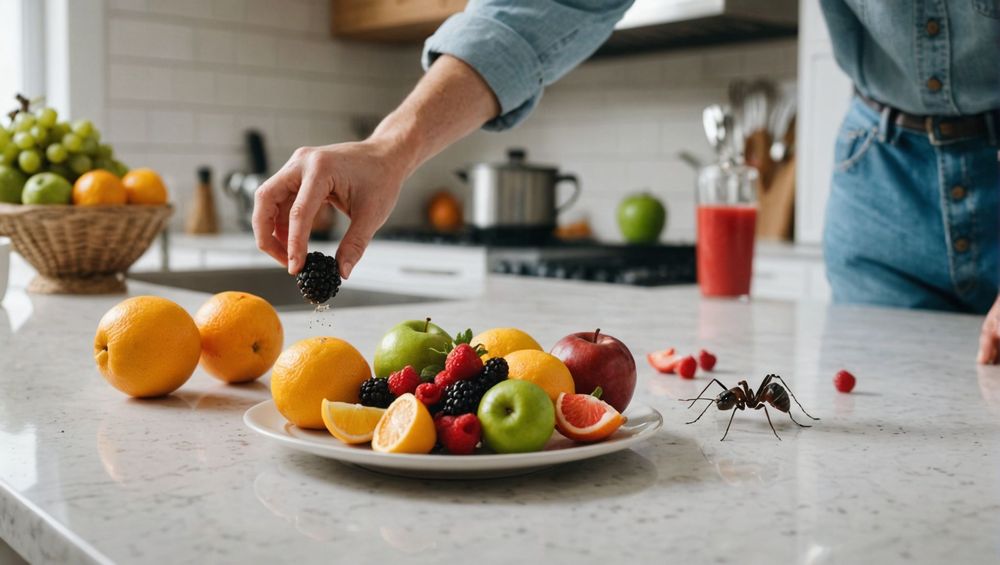Sugar ants, also known as thief ants or pavement ants, can be a frustrating nuisance as they invade our homes in search of food. To effectively rid your home of sugar ants, it is essential to understand their behavior, identify food sources, and employ various extermination methods. This article will guide you through proven strategies to eliminate sugar ants and prevent future infestations.
Understanding Sugar Ants

Before you can effectively eradicate sugar ants from your home, it’s vital to understand their behavior and habitat preferences. Sugar ants are attracted to sugary substances, making kitchens and dining areas prime targets. They are small, typically measuring about 1/8 to 1/4 inch in length, with a brown to black coloration. This species often follows pheromone trails laid down by other ants, which can lead entire colonies to food sources within your living space. Their quick reproduction and social structure make them a challenge to control once they establish a nest.
Identifying the Problem

To tackle a sugar ant infestation, the first step is to properly identify the problem. Look for trails of ants, which can often be found marching back and forth to a food source. Here are a few common signs to watch for:
- Frequent sightings of ants in kitchens and pantries.
- Ants congregating around spilled sugary substances.
- Visible nests in wall voids or under floors.
- Presence of tiny crumbs or food debris that attracts ants.
- Trailing behavior along walls, countertops, or floors.
Once you confirm the presence of sugar ants, you can begin taking steps to eliminate them effectively.
Cleaning and Exclusion Strategies
The first line of defense against sugar ants is extensive clean-up. Ensuring that no food sources are available is critical for pest control. Start with these steps:
- Wipe down surfaces regularly with a mixture of vinegar and water, as the strong smell disrupts pheromone trails.
- Seal all food items in airtight containers, especially sugar, honey, and syrup.
- Keep floors free of crumbs and spills by vacuuming daily.
- Store pet food in sealed containers and remove uneaten pet food promptly.
- Make sure trash bins are covered and emptied regularly to deter ants from foraging nearby.
In addition to cleaning, it is essential to seal entry points around your home. Inspect windows, doors, and cracks in walls, applying caulk or weather stripping to prevent future access for sugar ants.
Natural Remedies to Repel Sugar Ants
If you prefer to use non-toxic methods, there are several natural remedies known to help repel sugar ants. Here are some effective solutions:
- Vinegar: Mix equal parts water and vinegar in a spray bottle and apply it to ant trails and potential entry points.
- Essential Oils: Peppermint and tea tree oils are known for their repellent properties. Mix a few drops with water and spray in ant-prone areas.
- Boric Acid: Create a bait with sugar and boric acid to attract ants, leading to their elimination while being less harmful to pets and kids when used responsibly.
- Soap and Water: A spray made of soap and water can kill ants on contact and disrupt their scent trails.
While these natural remedies can be effective, they may not always eliminate the problem completely and often work best alongside other control methods.
Commercial Pest Control Solutions
If your efforts to eliminate sugar ants naturally are unsuccessful, it may be time to consider commercial pest control solutions. Here are some options available:
- Ant Sprays: Insect sprays designed for ants can provide immediate relief. Ensure that the product is safe for indoor use.
- Baits and Traps: Use commercially available ant baits that contain insecticides to attract and poison the entire colony. These are often more effective than sprays.
- Professional Exterminators: Hire a pest control service if your home remains under siege. Professionals can identify the nest and treat effectively.
Choosing the right pest control solution will depend on the severity of the infestation and your personal preferences for treatment methods.
Conclusion
Eliminating sugar ants from your home requires a combination of cleaning, prevention, and possibly the use of natural or commercial solutions. By properly identifying the issue and employing a structured approach, you can reclaim your space from these pesky invaders. Maintain good hygiene practices, seal entry points, and utilize pest control methods effectively to ensure that your home remains ant-free.
FAQs
1. Are sugar ants harmful to humans or pets?
No, sugar ants are generally not harmful. They do not bite or sting, but they can contaminate food, causing hygiene concerns.
2. How can I tell if I have a sugar ant infestation?
Look for trails of ants leading to food sources, trails along walls, and nests in hidden areas. If you see several ants in one place, it may indicate an infestation.
3. Can sugar ants damage my home?
While sugar ants do not cause structural damage like termites, their nesting habits can lead to the potential for contamination of food and unsanitary conditions.
4. How long does it take to eliminate sugar ants?
It varies based on the infestation level and chosen control methods. For minor issues, a few days may suffice, while severe infestations might take weeks for complete elimination.
5. Are there any preventative measures I can take to avoid a future invasion?
Maintain cleanliness in food storage areas, seal cracks and crevices, and eliminate standing water to make your home less attractive to sugar ants.
